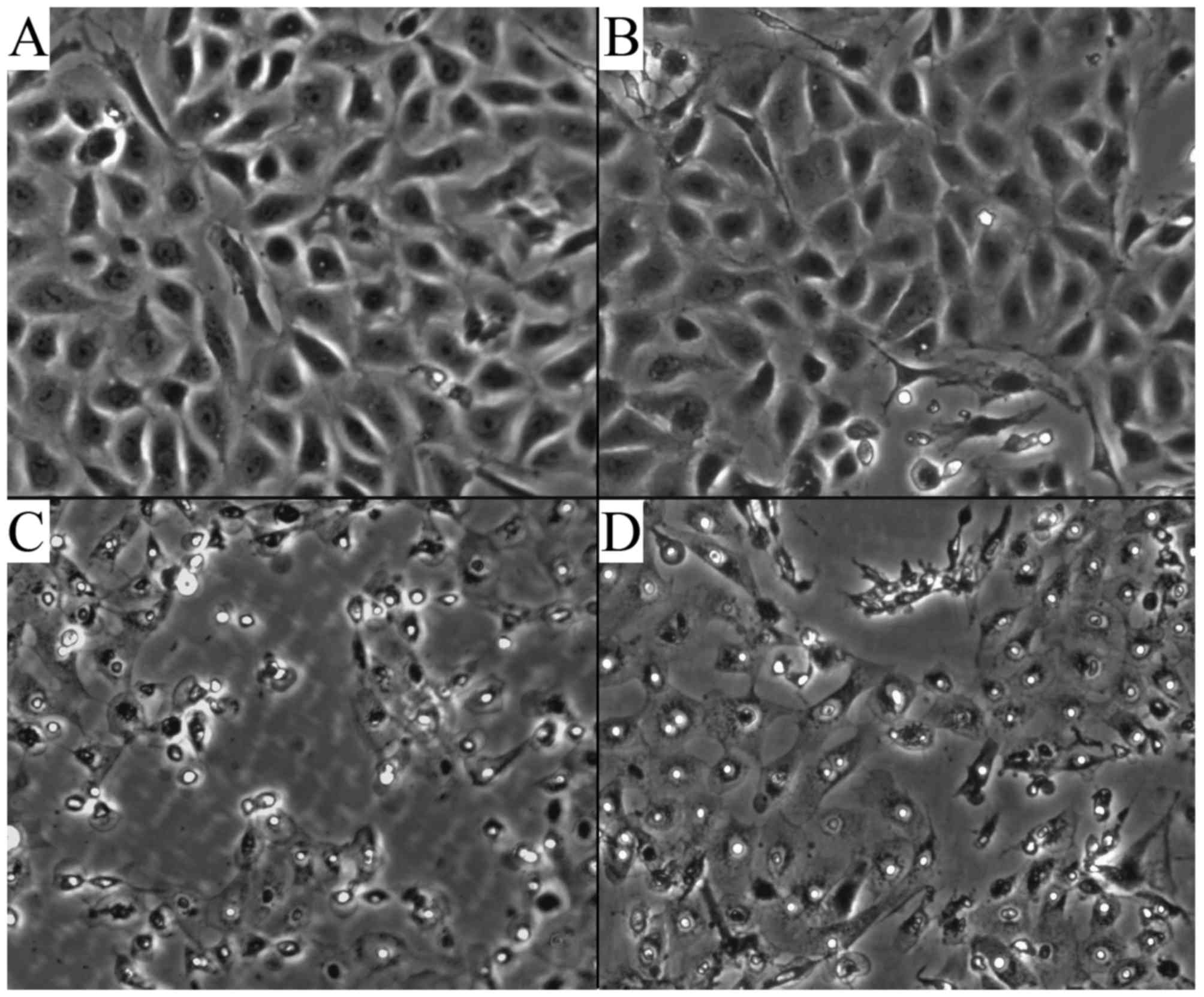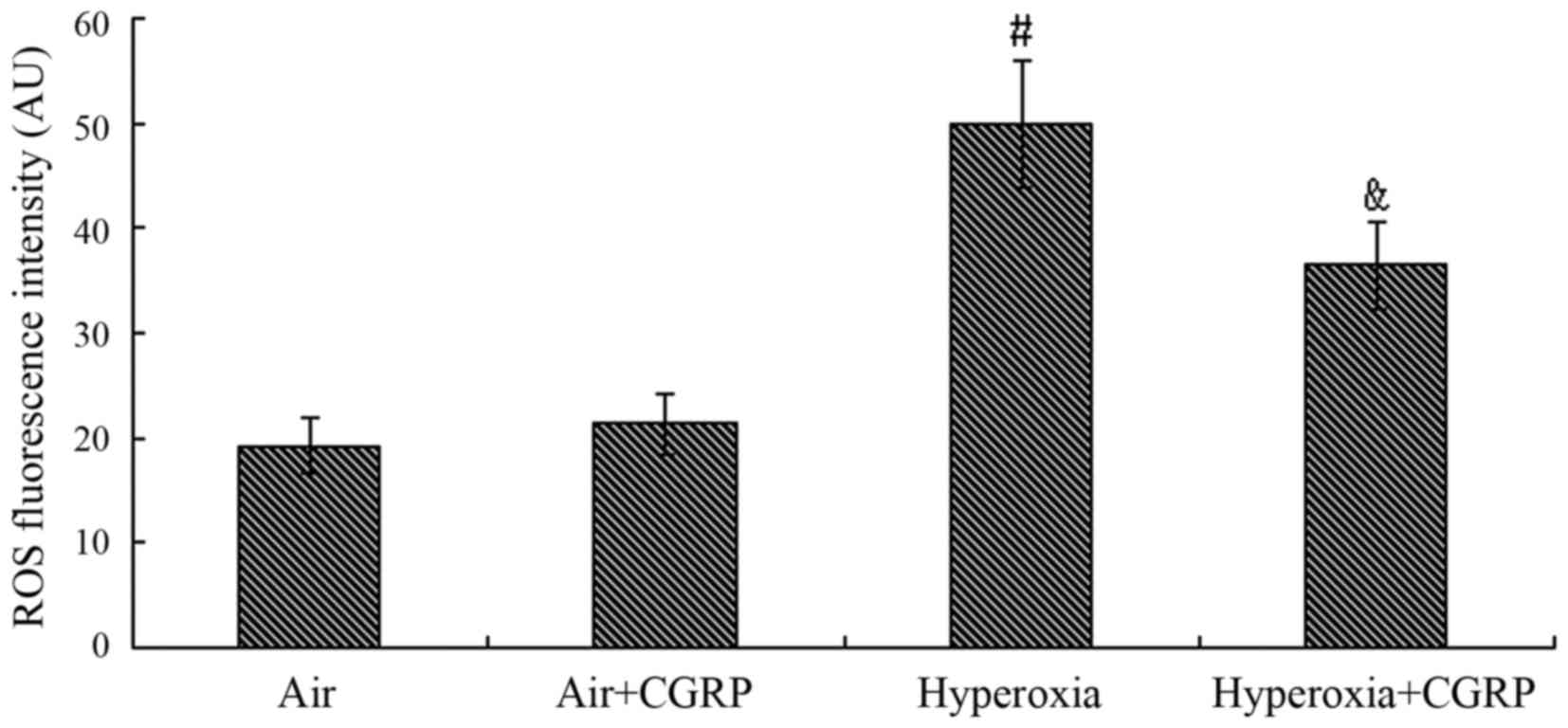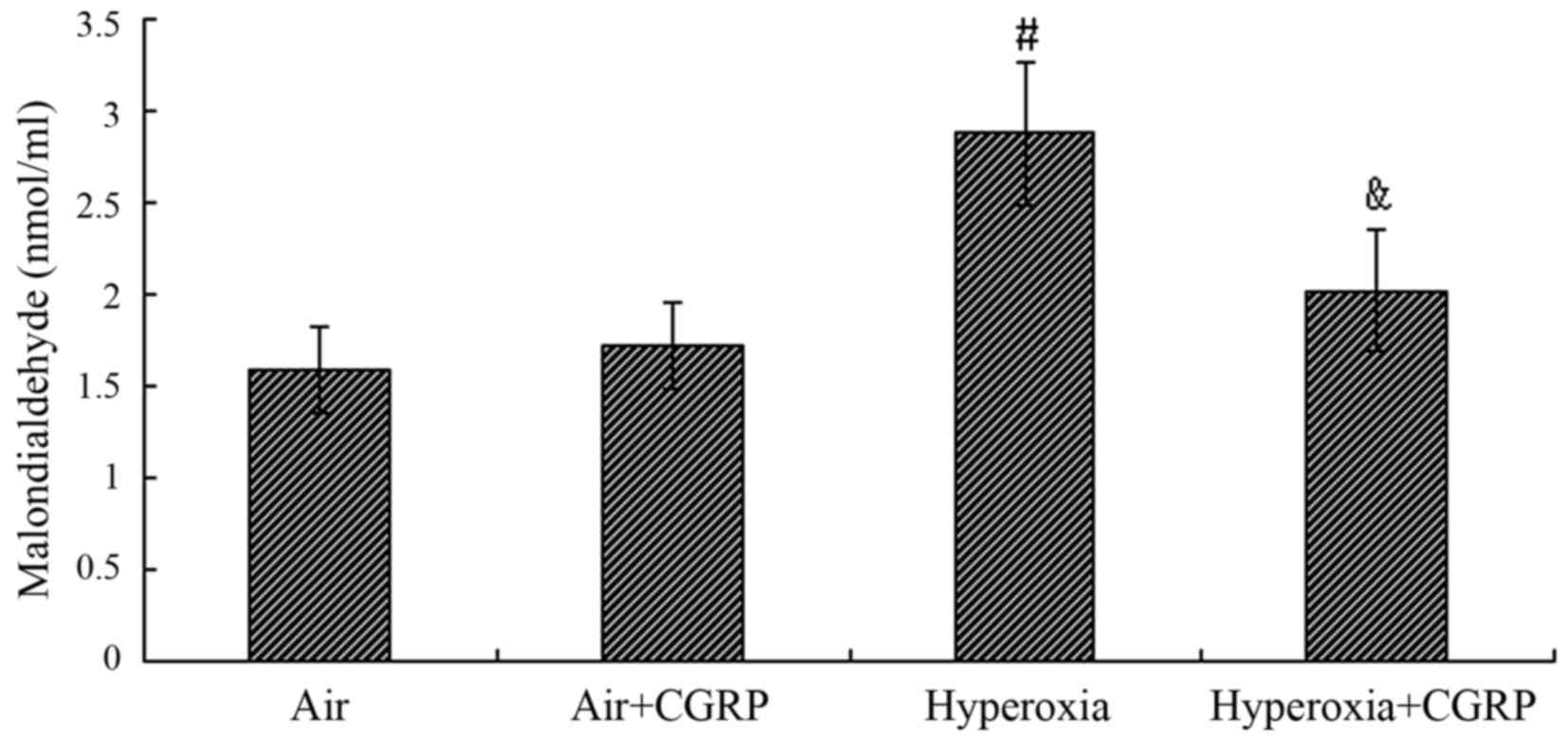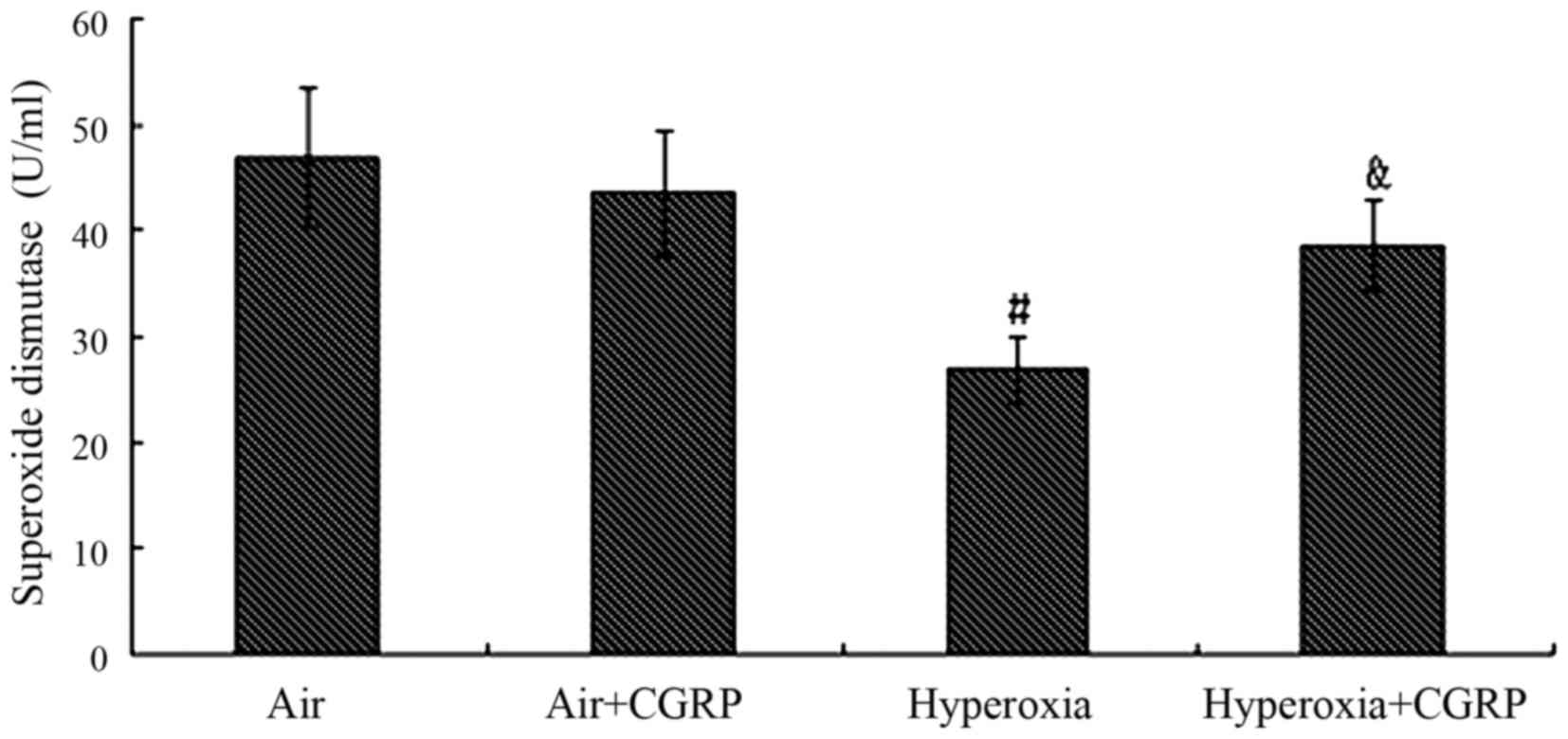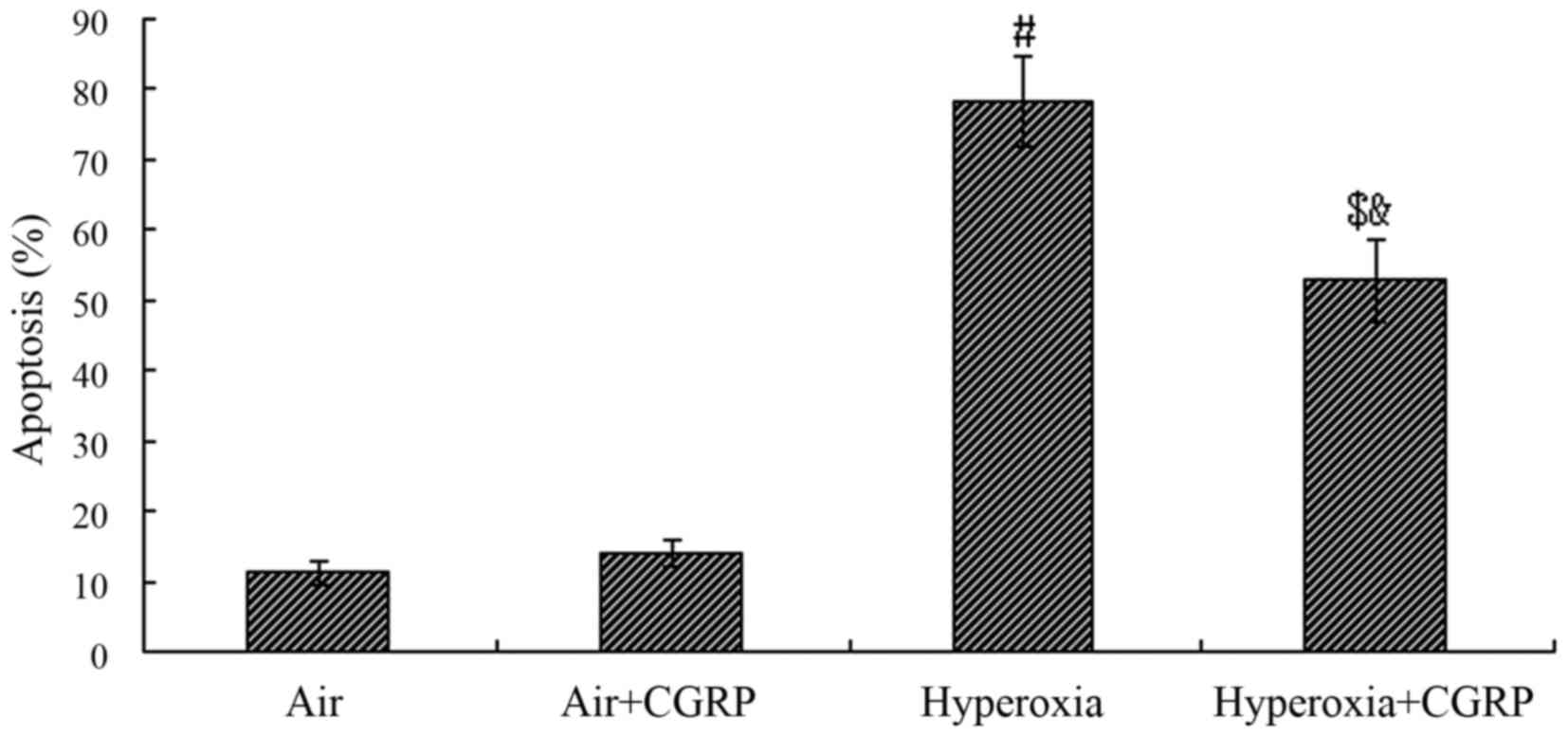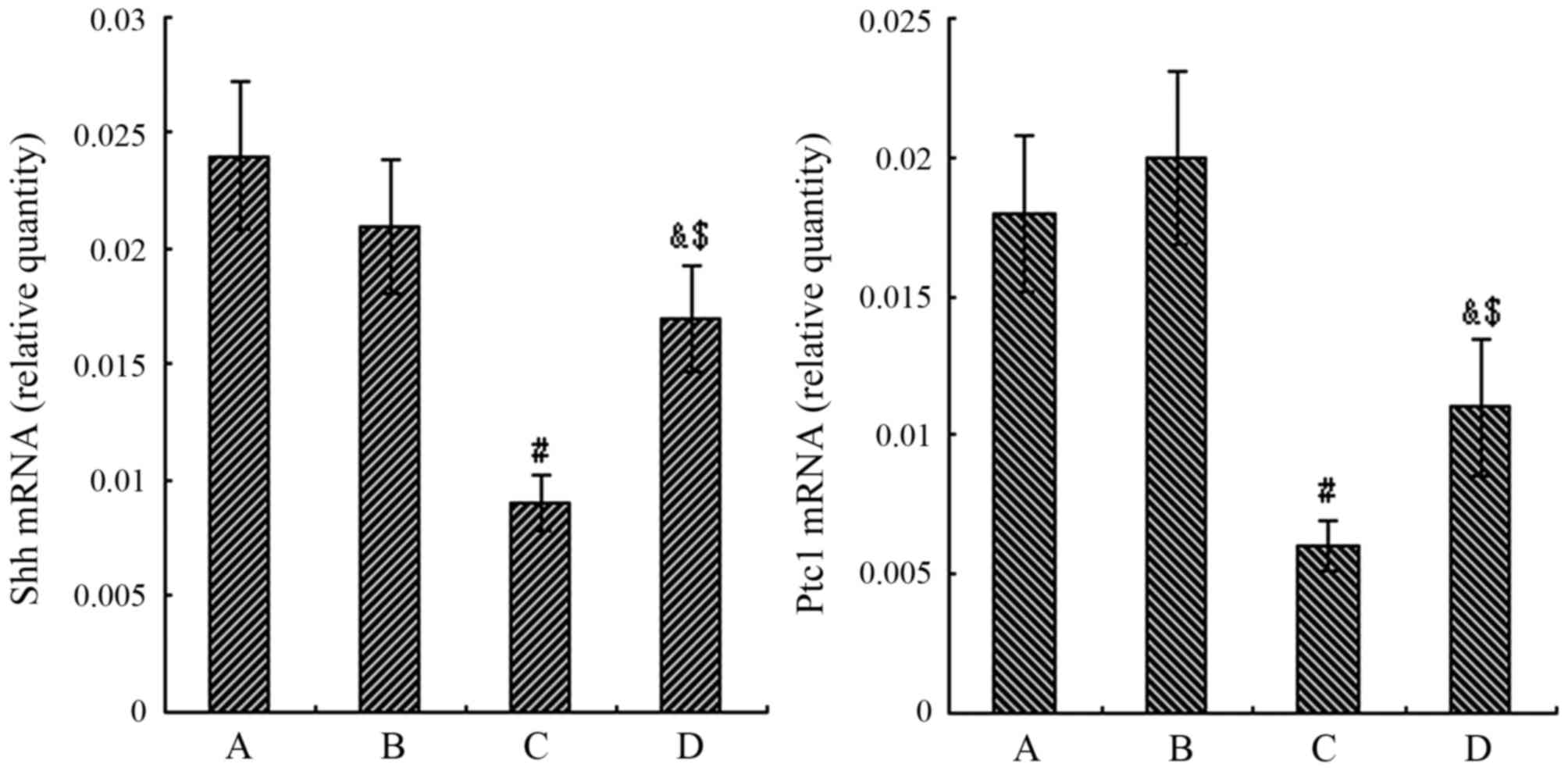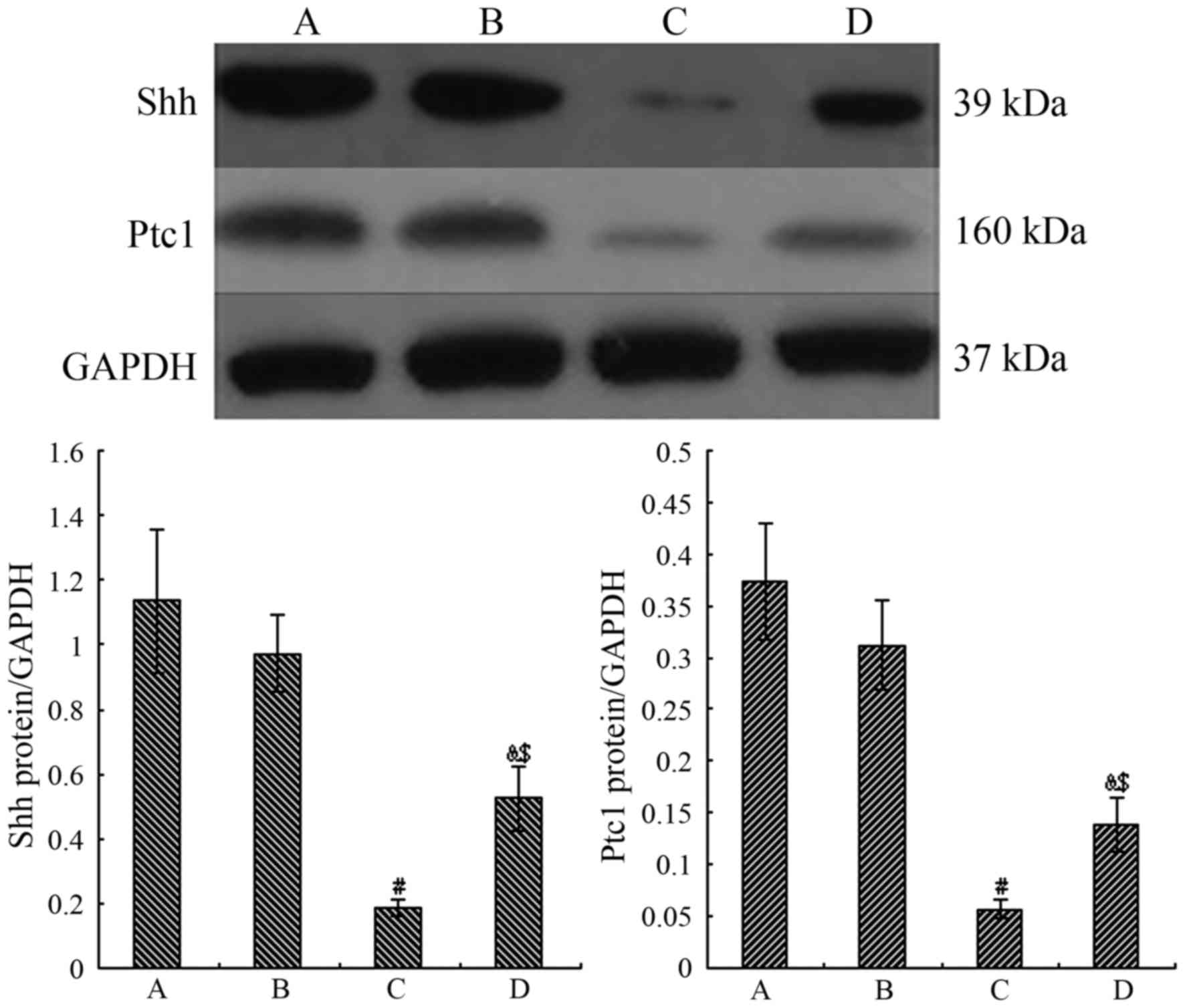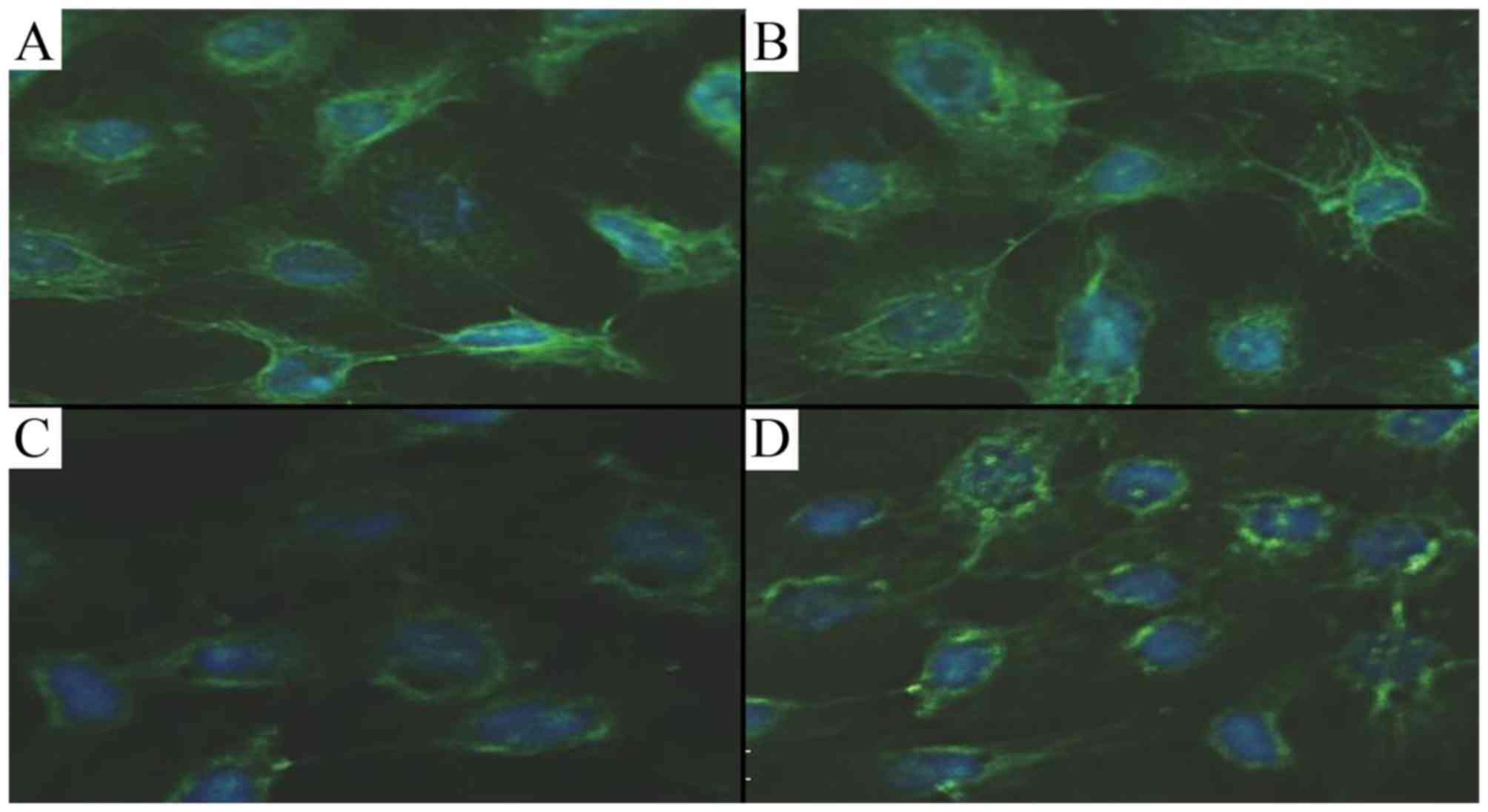|
1
|
Kinsella JP, Greenough A and Abman SH:
Bronchopulmonary dysplasia. Lancet. 367:1421–1431. 2006. View Article : Google Scholar : PubMed/NCBI
|
|
2
|
Al Hazzani F and Khadawardi E: Effects of
targeting higher vs lower arterial oxygen saturations on death or
disability in extremely preterm infants: The Canadian Oxygen Trial.
J Clin Neonatol. 2:70–72. 2013. View Article : Google Scholar : PubMed/NCBI
|
|
3
|
Perrone S, Bracciali C, Di Virgilio N and
Buonocore G: Oxygen use in neonatal care: A two-edged sword. Front
Pediatr. 4:1432017. View Article : Google Scholar : PubMed/NCBI
|
|
4
|
Panwar R: The unknowns about oxygen
therapy in critically ill patients. J Thorac Dis. 8:E1543–E1546.
2016. View Article : Google Scholar
|
|
5
|
Altemeier WA and Sinclair SE: Hyperoxia in
the intensive care unit: Why more is not always better. Curr Opin
Crit Care. 13:73–78. 2007. View Article : Google Scholar : PubMed/NCBI
|
|
6
|
Li Z, Fang F and Xu F: Effects of
different states of oxidative stress on fetal rat alveolar type II
epithelial cells in vitro and ROS induced changes in Wnt signaling
pathway expression. Mol Med Rep. 7:1528–1532. 2013.PubMed/NCBI
|
|
7
|
Hilgendorff A and O'Reilly MA:
Bronchopulmonary dysplasia early changes leading to long-term
consequences. Front Med (Lausanne). 2:22015.
|
|
8
|
Stripp BR: Hierarchical organization of
lung progenitor cells: Is there an adult lung tissue stem cell?
Proc Am Thorac Soc. 5:695–698. 2008. View Article : Google Scholar : PubMed/NCBI
|
|
9
|
Mason RJ: Biology of alveolar type II
cells. Respirology. 11(Suppl): S12–S15. 2006. View Article : Google Scholar : PubMed/NCBI
|
|
10
|
Watson RE, Supowit SC, Zhao H, Katki KA
and Dipette DJ: Role of sensory nervous system vasoactive peptides
in hypertension. Braz J Med Biol Res. 35:1033–1045. 2002.
View Article : Google Scholar : PubMed/NCBI
|
|
11
|
Dakhama A, Larsen GL and Gelfand EW:
Calcitonin gene-related peptide: Role in airway homeostasis. Curr
Opin Pharmacol. 4:215–220. 2004. View Article : Google Scholar : PubMed/NCBI
|
|
12
|
Kawanami Y, Morimoto Y, Kim H, Nakamura T,
Machida K, Kido T, Asonuma E, Yatera K, Yoshii C and Kido M:
Calcitonin gene-related peptide stimulates proliferation of
alveolar epithelial cells. Respir Res. 10:82009. View Article : Google Scholar : PubMed/NCBI
|
|
13
|
Fu HM, Xu F, Liu CJ, Kuang FW, Huang B,
Fang F and Fu YQ: Influence of 60% oxygen inhalation on type II
alveolar epithelial cells and protective role of calcitonin
gene-related peptide from their damage induced in premature rat.
Zhongguo Wei Zhong Bing Ji Jiu Yi Xue. 20:578–581. 2008.PubMed/NCBI
|
|
14
|
Demayo F, Minoo P, Plopper CG, Schuger L,
Shannon J and Torday JS: Mesenchymal-epithelial interactions in
lung development and repair: Are modeling and remodeling the same
process? Am J Physiol Lung Cell Mol Physiol. 283:L510–L517. 2002.
View Article : Google Scholar : PubMed/NCBI
|
|
15
|
Severgnini M, Takahashi S, Rozo LM, Homer
RJ, Kuhn C, Jhung JW, Perides G, Steer M, Hassoun PM, Fanburg BL,
et al: Activation of the STAT pathway in acute lung injury. Am J
Physiol Lung Cell Mol Physiol. 286:L1282–L1292. 2004. View Article : Google Scholar : PubMed/NCBI
|
|
16
|
Yum HK, Arcaroli J, Kupfner J, Shenkar R,
Penninger JM, Sasaki T, Yang KY, Park JS and Abraham E: Involvement
of phosphoinositide 3-kinases in neutrophil activation and the
development of acute lung injury. J Immunol. 167:6601–6608. 2001.
View Article : Google Scholar : PubMed/NCBI
|
|
17
|
Schuh K and Pahl A: Inhibition of the MAP
kinase ERK protects from lipopolysaccharide-induced lung injury.
Biochem Pharmacol. 77:1827–1834. 2009. View Article : Google Scholar : PubMed/NCBI
|
|
18
|
Watson S, Serrate C and Vignot S: Sonic
Hedgehog signaling pathway: From embryology to molecular targeted
therapies. Bull Cancer. 97:1477–1483. 2010.
|
|
19
|
Jacob L and Lum L: Deconstructing the
hedgehog pathway in development and disease. Science. 318:66–68.
2007. View Article : Google Scholar : PubMed/NCBI
|
|
20
|
Thome UH, Davis IC, Nguyen SV, Shelton BJ
and Matalon S: Modulation of sodium transport in fetal alveolar
epithelial cells by oxygen and corticosterone. Am J Physiol Lung
Cell Mol Physiol. 284:L376–L385. 2003. View Article : Google Scholar : PubMed/NCBI
|
|
21
|
Livak KJ and Schmittgen TD: Analysis of
relative gene expression data using real-time quantitative PCR and
the 2(−Delta Delta C(T)) method. Methods. 25:402–408. 2001.
View Article : Google Scholar
|
|
22
|
Miyake Y, Kaise H, Isono K, Koseki H,
Kohno K and Tanaka M: Protective role of macrophages in
noninflammatory lung injury caused by selective ablation of
alveolar epithelial type II cells. J Immunol. 178:5001–5009. 2007.
View Article : Google Scholar : PubMed/NCBI
|
|
23
|
Jiang J, Xu F and Chen J: Repair, survival
and apoptosis of type II alveolar epithelial cells and the change
of bcl-2/53 in oxidative stress. Zhonghua Er Ke Za Zhi. 46:74–75.
2008.In Chinese. PubMed/NCBI
|
|
24
|
Yee M, Vitiello PF, Roper JM, Staversky
RJ, Wright TW, McGrath-Morrow SA, Maniscalco WM, Finkelstein JN and
O'Reilly MA: Type II epithelial cells are critical target for
hyperoxia-mediated impairment of postnatal lung development. Am J
Physiol Lung Cell Mol Physiol. 291:L1101–L1111. 2006. View Article : Google Scholar : PubMed/NCBI
|
|
25
|
Kuwano K: Epithelial cell apoptosis and
lung remodeling. Cell Mol Immunol. 4:419–429. 2007.
|
|
26
|
Fattman CL: Apoptosis in pulmonary
fibrosis: Too much or not enough? Antioxid Redox Signal.
10:379–385. 2008. View Article : Google Scholar
|
|
27
|
Huang B, Fu H, Yang M, Fang F, Kuang F and
Xu F: Neuropeptide substance P attenuates hyperoxia-induced
oxidative stress injury in type II alveolar epithelial cells via
suppressing the activation of JNK pathway. Lung. 187:421–426. 2009.
View Article : Google Scholar : PubMed/NCBI
|
|
28
|
Ao X, Fang F and Xu F: Role of vasoactive
intestinal peptide in hyperoxia-induced injury of primary type II
alveolar epithelial cells. Indian J Pediatr. 78:535–539. 2011.
View Article : Google Scholar
|
|
29
|
Ao X, Fang F and Xu F: Vasoactive
intestinal peptide protects alveolar epithelial cells against
hyperoxia via promoting the activation of STAT3. Regul Pept.
168:1–4. 2011. View Article : Google Scholar : PubMed/NCBI
|
|
30
|
Bhandari V: Molecular mechanisms of
hyperoxia-induced acute lung injury. Front Biosci. 13:6653–6661.
2008. View Article : Google Scholar : PubMed/NCBI
|
|
31
|
Bhandari V: Hyperoxia-derived lung damage
in preterm infants. Semin Fetal Neonatal Med. 15:223–229. 2010.
View Article : Google Scholar : PubMed/NCBI
|
|
32
|
Smillie SJ and Brain SD: Calcitonin
gene-related peptide (CGRP) and its role in hypertension.
Neuropeptides. 45:93–104. 2011. View Article : Google Scholar : PubMed/NCBI
|
|
33
|
Brain SD and Grant AD: Vascular actions of
calcitonin gene-related peptide and adrenomedullin. Physiol Rev.
84:903–934. 2004. View Article : Google Scholar : PubMed/NCBI
|
|
34
|
Szallasi A and Blumberg PM: Vanilloid
receptors: New insights enhance potential as a therapeutic target.
Pain. 68:195–208. 1996. View Article : Google Scholar : PubMed/NCBI
|
|
35
|
Itoh T, Obata H, Murakami S, Hamada K,
Kangawa K, Kimura H and Nagaya N: Adrenomedullin ameliorates
lipopolysac-charide-induced acute lung injury in rats. Am J Physiol
Lung Cell Mol Physiol. 293:L446–L452. 2007. View Article : Google Scholar : PubMed/NCBI
|
|
36
|
Rahman M, Nishiyama A, Guo P, Nagai Y,
Zhang GX, Fujisawa Y, Fan YY, Kimura S, Hosomi N, Omori K, et al:
Effects of adrenomedullin on cardiac oxidative stress and collagen
accumulation in aldosterone-dependent malignant hypertensive rats.
J Pharmacol Exp Ther. 318:1323–1329. 2006. View Article : Google Scholar : PubMed/NCBI
|
|
37
|
Kim SM, Kim JY, Lee S and Park JH:
Adrenomedullin protects against hypoxia/reoxygenation-induced cell
death by suppression of reactive oxygen species via thiol redox
systems. FEBS Lett. 584:213–218. 2010. View Article : Google Scholar
|
|
38
|
Song S, Liu N, Liu W, Shi R, Guo KJ and
Liu YF: The effect of pretreatment with calcitonin gene-related
peptide on attenuation of liver ischemia and reperfusion injury due
to oxygen free radicals and apoptosis. Hepatogastroenterology.
56:1724–1729. 2009.
|
|
39
|
Kroeger I, Erhardt A, Abt D, Fischer M,
Biburger M, Rau T, Neuhuber WL and Tiegs G: The neuropeptide
calcitonin gene-related peptide (CGRP) prevents inflammatory liver
injury in mice. J Hepatol. 51:342–353. 2009. View Article : Google Scholar : PubMed/NCBI
|
|
40
|
Feng G, Xu X, Wang Q, Liu Z, Li Z and Liu
G: The protective effects of calcitonin gene-related peptide on
gastric mucosa injury after cerebral ischemia reperfusion in rats.
Regul Pept. 160:121–128. 2010. View Article : Google Scholar
|
|
41
|
Machado J, Manfredi LH, Silveira WA,
Gonçalves DA, Lustrino D, Zanon NM, Kettelhut IC and Navegantes LC:
Calcitonin gene-related peptide inhibits autophagic-lysosomal
proteolysis through cAMP/PKA signaling in rat skeletal muscles. Int
J Biochem Cell Biol. 72:40–50. 2016. View Article : Google Scholar : PubMed/NCBI
|
|
42
|
Li J, Carnevale KA, Dipette DJ and Supowit
SC: Renal protective effects of alpha-calcitonin gene-related
peptide in deoxycorticosterone-salt hypertension. Am J Physiol
Renal Physiol. 304:F1000–F1008. 2013. View Article : Google Scholar : PubMed/NCBI
|
|
43
|
Schneider L, Hartwig W, Flemming T,
Hackert T, Fortunato F, Heck M, Gebhard MM, Nawroth PP, Bierhaus A,
Buchler MW and Werner J: Protective effects and anti-inflammatory
pathways of exogenous calcitonin gene-related peptide in severe
necrotizing pancreatitis. Pancreatology. 9:662–669. 2009.
View Article : Google Scholar : PubMed/NCBI
|
|
44
|
Drissi H, Lasmoles F, Le Mellay V, Marie
PJ and Lieberherr M: Activation of phospholipase C-beta1 via
Galphaq/11 during calcium mobilization by calcitonin gene-related
peptide. J Biol Chem. 273:20168–20174. 1998. View Article : Google Scholar : PubMed/NCBI
|
|
45
|
Brigelius-Flohé R, Banning A, Kny M and
Böl GF: Redox events in interleukin-1 signaling. Arch Biochem
Biophys. 423:66–73. 2004. View Article : Google Scholar : PubMed/NCBI
|
|
46
|
Piette J, Piret B, Bonizzi G, Schoonbroodt
S, Merville MP, Legrand-Poels S and Bours V: Multiple redox
regulation in NF-kappaB transcription factor activation. Biol Chem.
378:1237–1245. 1997.
|
|
47
|
Cohen MM Jr: The hedgehog signaling
network. Am J Med Genet A. 123A:5–28. 2003. View Article : Google Scholar : PubMed/NCBI
|
|
48
|
Watkins DN, Berman DM, Burkholder SG, Wang
B, Beachy PA and Baylin SB: Hedgehog signalling within airway
epithelial progenitors and in small-cell lung cancer. Nature.
422:313–317. 2003. View Article : Google Scholar : PubMed/NCBI
|















